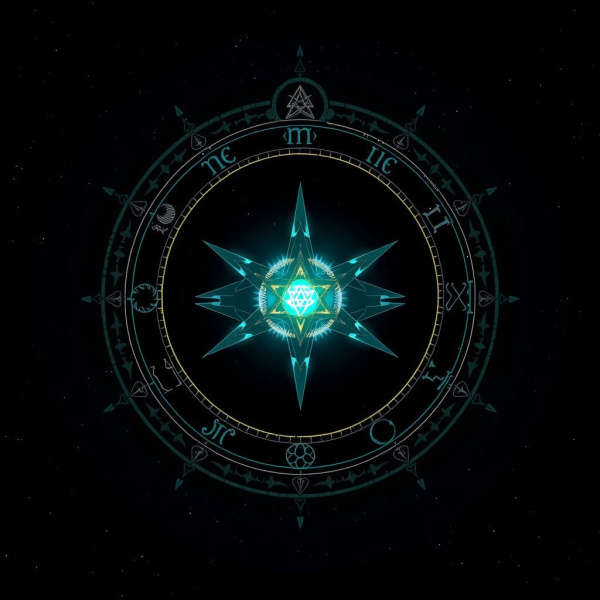Astral Necromancy
On the Nature of Astral Necromancy
Astral Necromancy differs somewhat from other forms of the necromancy in that it was largely practiced by an clerical underground that exchanged secrets of the art back and forth across Europe from the twelfth century onwards.
The key elements of Astral Necromancy are astrology, use of ceremonial circles and demonology. Each of these practices are occult fields in and of themselves, this blending of other esoteric arts with Necromancy creates a powerful fusion of occult pursuits that magnifies the efficacy of necromancy already dark allure.
Similar to other forms of necromancy the Astral practices are bound by the opposing concepts of Authority and Taboo. Practitioners can approach Astral death magic from either direction, but with radically different procedures and side-effects. Authoritarian practice assumes the caster to be altruistic or morally pure which usually translates into ritual purity rather than true piety. Tabooist practitioners by comparison must delve into degradation and impurity in order to empower themselves. Each approach has strengths and weaknesses. Authoritarian necromancers tend to grow slowly in power and last longer than their tabooist counterparts whose powers peak quickly but tend to burnout all too often.
History
Antique Origins
Early necromancy was related to – and most likely evolved from – forms of shamanism or prehistoric ritual magic that calls upon spirits such as the ghosts of deceased forebears. Classical necromancers addressed the dead in "a mixture of high-pitch squeaking and low droning", comparable to the trance-state mutterings of shamans. Necromancy was prevalent throughout antiquity with records of its practice in ancient Egypt, Babylonia, Greece, ancient Etruria, Rome, and China. In his Geographica, Strabo refers to νεκρομαντία (nekromantia), or "diviners by the dead", as the foremost practitioners of divination among the people of Persia, and it is believed to have also been widespread among the peoples of Chaldea (particularly the Hermeticists, or "star-worshipers") and Babylonia. The Babylonian necromancers were called manzazuu or sha-etemmu, and the spirits they raised were called etemmu.
The oldest literary account of necromancy is found in Homer's Odyssey. Under the direction of Circe, a powerful sorceress, Odysseus travels to the underworld (katabasis) in order to gain insight about his impending voyage home by raising the spirits of the dead through the use of spells which Circe has taught him. He wishes to invoke and question the shade of Tiresias in particular; however, he is unable to summon the seer's spirit without the assistance of others. The Odyssey's passages contain many descriptive references to necromantic rituals: rites must be performed around a pit with fire during nocturnal hours, and Odysseus has to follow a specific recipe, which includes the blood of sacrificial animals, to concoct a libation for the ghosts to drink while he recites prayers to both the ghosts and gods of the underworld.
Practices such as these, varying from the mundane to the grotesque, were commonly associated with necromancy. Rituals could be quite elaborate, involving magic circles, wands, talismans, and incantations. The necromancer might also surround himself with morbid aspects of death, which often included wearing the deceased's clothing and consuming foods that symbolized lifelessness and decay such as unleavened black bread and unfermented grape juice. Some necromancers even went so far as to take part in the mutilation and consumption of corpses. These ceremonies could carry on for hours, days, or even weeks, leading up to the eventual summoning of spirits. Frequently they were performed in places of interment or other melancholy venues that suited specific guidelines of the necromancer.
Ancient Israel & The Prohibited Art
There are also several references to necromancers – called "bone-conjurers" among Jews of the later Hellenistic period – in the Bible. The Book of Deuteronomy (18:9–12) explicitly warns the Israelites against engaging in the Canaanite practice of divination from the dead:
"9 When thou art come into the land which the LORD thy God giveth thee, thou shalt not learn to do according to the abominations of those nations. 10 There shall not be found among you any one who maketh his son or his daughter to pass through the fire, or who useth divination, or an observer of times, or an enchanter, or a witch, 11 or a charmer, or a consulter with familiar spirits, or a wizard, or a necromancer. 12 For all who do these things are an abomination unto the LORD, and because of these abominations the LORD thy God doth drive them out from before thee." -- (KJV)
Sources
https://en.wikipedia.org/wiki/Necromancy
---
https://en.wikipedia.org/wiki/Medieval_European_magic
---
https://en.m.wikipedia.org/wiki/Sorcery_(goetia)
---
https://en.wikipedia.org/wiki/Theurgy
---
https://en.m.wikipedia.org/wiki/Munich_Manual_of_Demonic_Magic
---
https://tobiasmastgrave.wordpress.com/2013/04/05/goetic-magic-its-history-and-uses/
---
https://ia800305.us.archive.org/14/items/pdfy-4Rxf8pz0BPZve9E5/_lcsyIJwV.pdf
---
https://en.m.wikipedia.org/wiki/Stars_in_astrology
---
https://en.m.wikipedia.org/wiki/Decan_(astrology)
---
https://en.wikipedia.org/wiki/Demonology
---
https://www.chapterly.com/name-generator/creature/demon
